How to Actually Wash Silk Without Ruining It (I Promise!)
Let’s be honest, we’ve all been there. You buy a gorgeous silk blouse or a set of those buttery-soft pillowcases, and you absolutely love them. But the moment they need cleaning, a wave of panic sets in. This fear usually leads to one of two things: you either shell out a small fortune for dry cleaning every single time, or you toss it in the wash with a prayer, only to pull out a dull, shrunken shadow of its former self.
In this article
I’ve spent years working with delicate fabrics, and if there’s one thing I’ve learned, it’s that silk is wildly misunderstood. It’s not nearly as fragile as its reputation suggests. It’s just… particular. Once you get what it needs, washing it becomes surprisingly simple and, dare I say, rewarding.
So, let’s skip the vague tips and get right to the method the pros use—a method built on understanding the fabric itself. This will help you keep your silk looking amazing for years, not just a few wears.
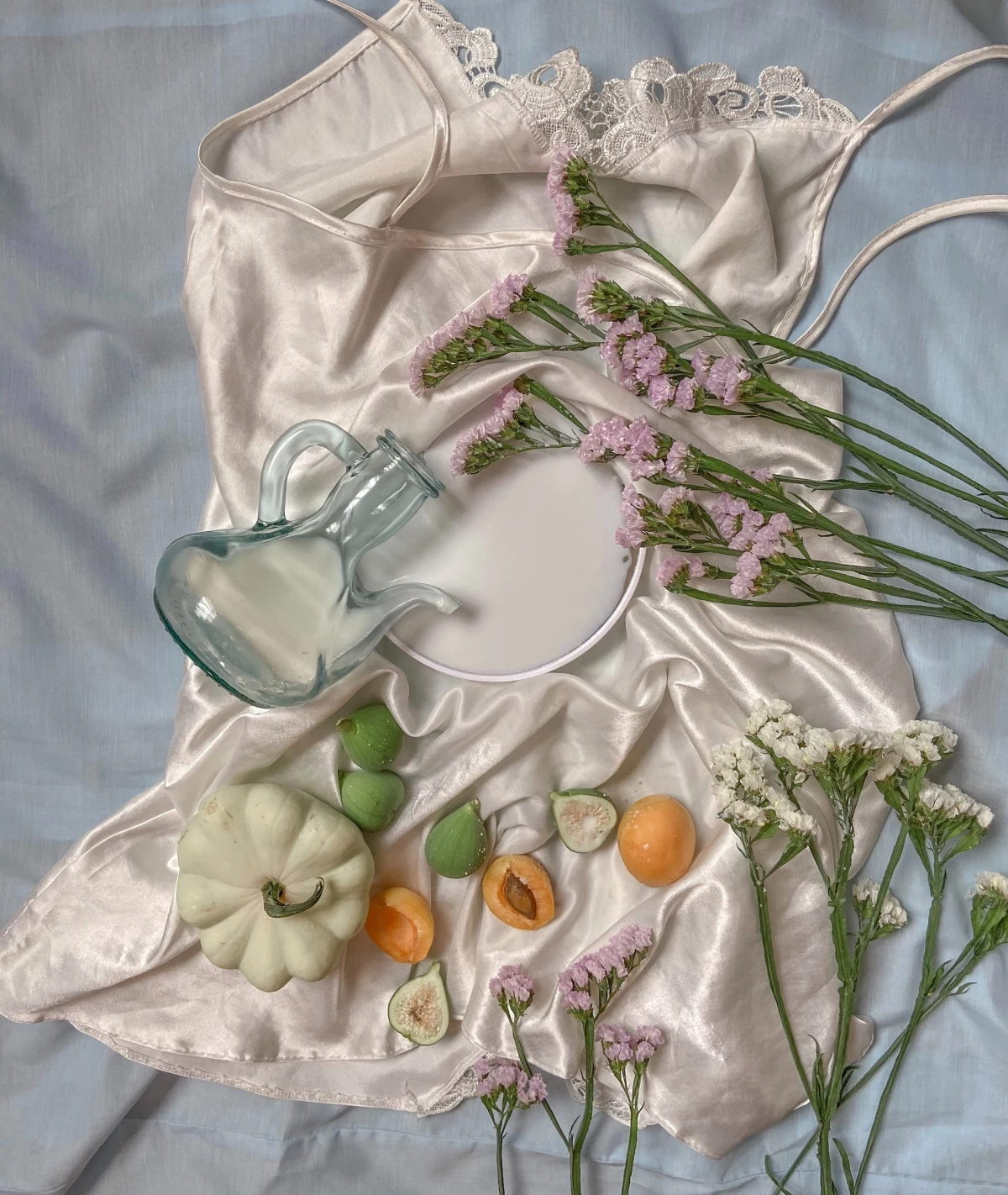
Your 5-Minute Win Today
Before we dive in, here’s a quick action you can take right now. Grab one silk item you’re nervous about washing. Find an inside seam, and let’s do the colorfastness test together. It takes less time than making coffee and will instantly tell you if it’s safe for a home wash. We’ll cover how in just a minute.
First, Why Is Silk So Needy?
To really get this right, you need to know what you’re dealing with. Silk is a protein fiber. Think of it this way: on a chemical level, silk has way more in common with your own hair than it does with cotton or linen. You wouldn’t blast your hair with harsh laundry powder, right? Same logic applies here.
The fiber’s unique, triangular shape is what gives silk its incredible shine—it acts like a tiny prism. But rough handling, harsh chemicals, or high heat can scratch and dull these microscopic surfaces forever. And here’s the most important fact you need to burn into your brain: silk loses up to 20% of its strength when wet. This isn’t an exaggeration. Those wet fibers are incredibly easy to stretch and tear, which is why aggressive rubbing or wringing is a death sentence for your garment.

Getting Ready: The Prep Work That Prevents Disaster
A good wash starts long before your silk ever touches water. Professionals never skip these steps, and neither should you.
The All-Important Colorfastness Test
Deeply colored silks, especially reds and navies, are notorious for bleeding dye. Here’s how to check yours:
- Find a hidden spot—an inside seam or hem is perfect.
- Dampen a clean, white cloth (a piece of an old t-shirt is better than a paper towel) with cool water.
- Press the damp cloth firmly against the test spot for about 30 seconds.
- Lift it and look. If you see even a hint of color transfer, that piece is a job for a professional dry cleaner. Don’t risk it! A simple test can save you from turning a white blouse into a tie-dyed pink mess.
Decoding the Care Label
Always check the label, but do it with a bit of savvy. Sometimes, manufacturers label an item “Dry Clean Only” just to be safe and avoid liability. For simple items like a basic top, scarf, or pillowcase, you can often ignore this and hand-wash safely (after doing the color test, of course).
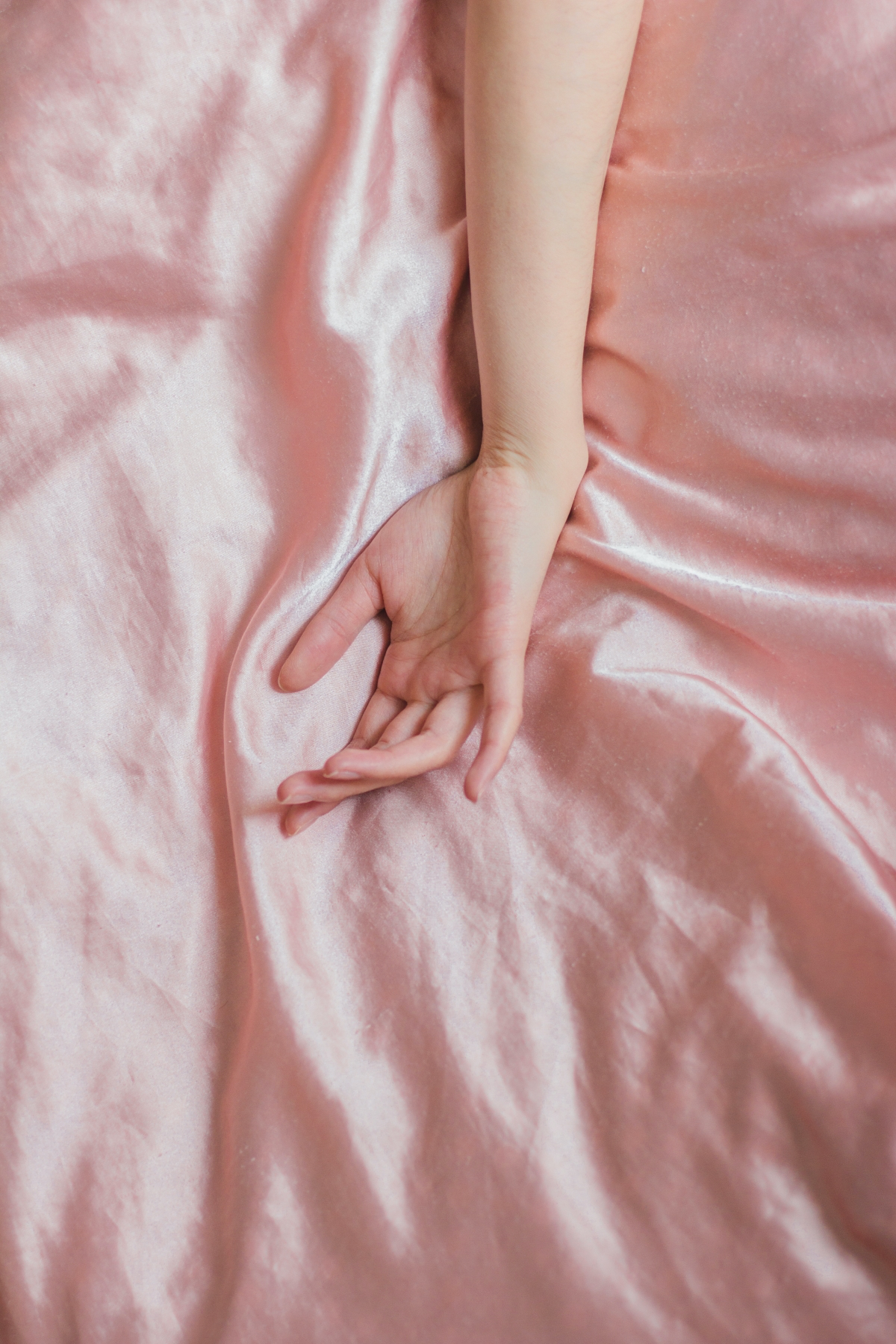
However, you should ALWAYS trust a “Dry Clean Only” label on these items:
- Structured Pieces: Think blazers, lined pants, or formal dresses. They often contain different materials that react to water in different ways, leading to weird puckering and a total loss of shape.
- Anything with Embellishments: Beading, sequins, or intricate embroidery is often attached with water-sensitive glue or thread.
- Complex Blends: A silk-wool blend, for instance, requires very specialized care.
Smart Spot Treating
Never, ever use a generic stain remover or chlorine bleach on silk. Bleach will literally dissolve the fibers and leave a hole. Here’s how to handle stains the right way:
- For general spots: Dab a tiny drop of your silk detergent directly on the stain. Gently work it in with your fingertip (no scrubbing!) and let it sit for 15 minutes before washing.
- Oil-based stains (like lotion or salad dressing): Don’t use water first! Lay the area flat and sprinkle it with cornstarch or talcum powder. Let it sit for at least an hour to absorb the oil, then gently brush it off before treating any remaining mark with detergent.
- Tannin stains (wine, coffee, tea): You need to act fast, ideally within the first 15-30 minutes. Blot the fresh stain immediately with a dry cloth to soak up the excess. Then, gently dab with a cool, damp cloth.
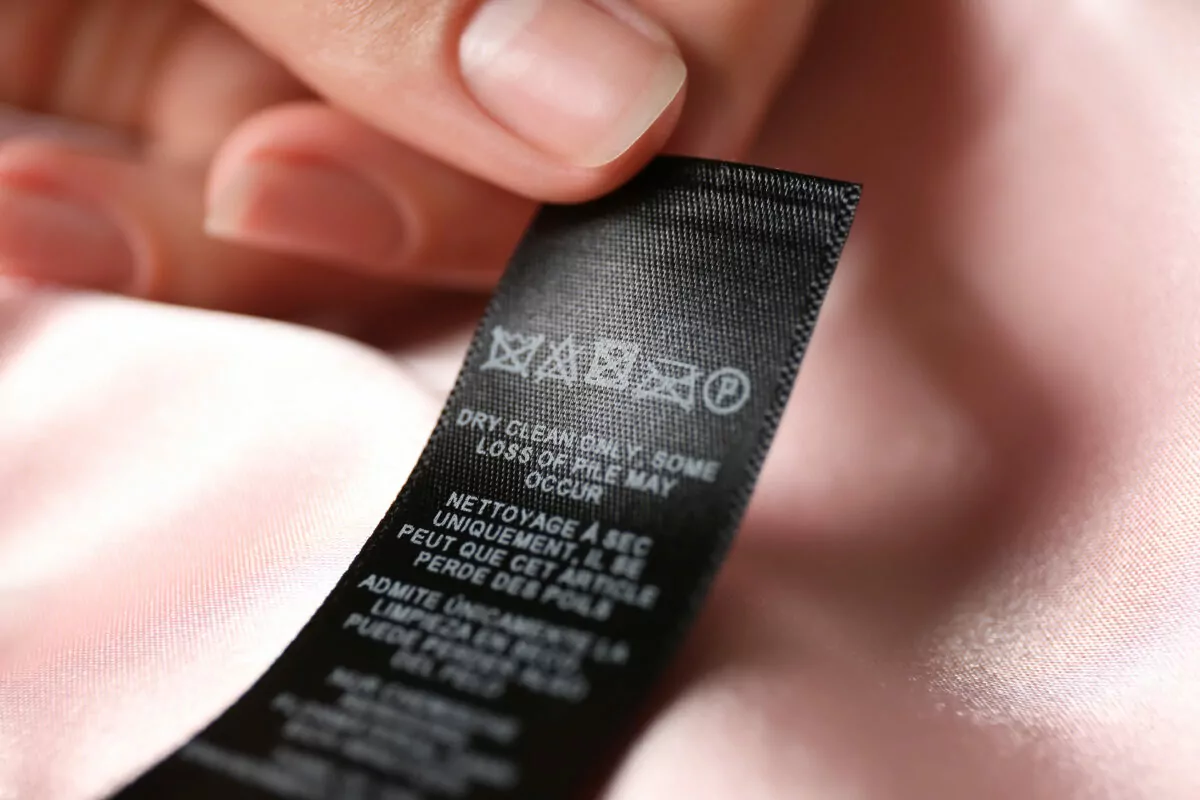
The Gold Standard: Hand-Washing Silk
This is it. The gentle, effective method that gives you total control and keeps silk looking its best. It’s how the experts do it.
What You’ll Need:
- A clean basin or sink. Make sure it’s totally free of any cleaning chemical residue.
- A pH-neutral detergent. This is non-negotiable. You can find these online or in the laundry aisle. Look for brands like Woolite Delicates (a great budget option, usually $5-$8), or specialty products like The Laundress Delicate Wash or Heritage Park Silk & Wool Detergent (pricier, around $20-$25, but very effective). In a real pinch, a drop of clear, unscented baby shampoo can work.
- Cool to lukewarm water. About 85°F (30°C) is perfect. If it feels warm on your wrist, it’s too hot.
- Two clean, thick white towels. White is key to prevent any accidental dye transfer.
The Step-by-Step Process
1. Prep the Bath: Fill your basin with cool water and add the detergent. You need very little—about a teaspoon per gallon of water. Using too much soap is a classic mistake that leaves a dulling film on the fabric. Swish the water to create light suds.
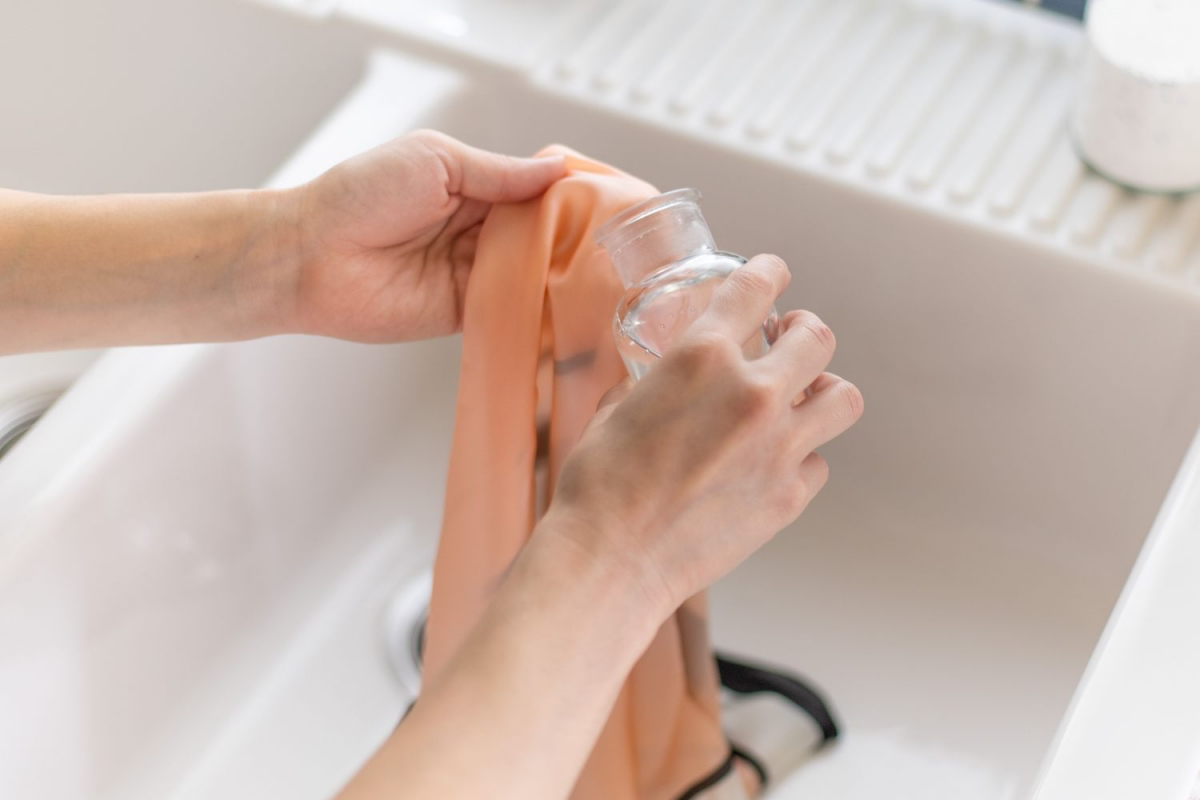
2. Submerge & Soak: Place your silk item in the water and gently press it down. Let it soak for 5 to 10 minutes. A 30-minute soak is the absolute maximum; any longer and you risk weakening the fibers.
3. The “Wash”: This is where gentleness is everything. Gently squeeze the sudsy water through the fabric. Imagine you’re kneading dough in slow motion. Do not twist, wring, or scrub. The water and soap will do the work without friction.
4. Rinse Thoroughly: Drain the soapy water and refill the basin with clean, cool water. Submerge the garment again, gently squeezing the water through to rinse out the soap. Repeat this until you see no more suds, which might take two or three rinses.
5. The Pro-Level Vinegar Rinse (Optional but Recommended!): This is an old-school trick that works wonders. After the final rinse, add about a quarter cup of distilled white vinegar to a fresh gallon of cool water. Submerge the garment for just one minute. Think of it like this: soap is alkaline, and vinegar is acidic. The vinegar rinse neutralizes any leftover soap residue that dulls the fabric, restoring its natural shine. Follow this with one last quick rinse in plain water.
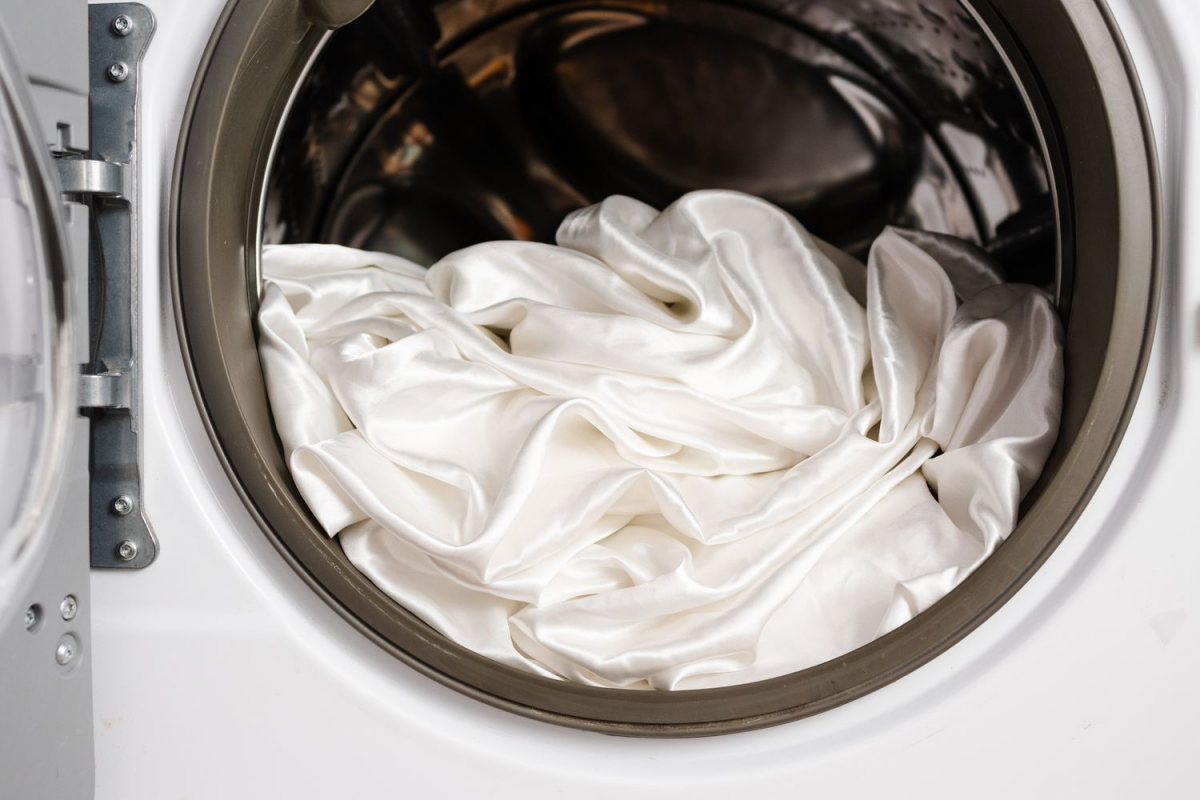
Drying Silk Correctly (And What to Avoid)
How you dry silk is just as critical as how you wash it.
Let me be direct: never, ever put silk in a tumble dryer. The high heat will shrink and scorch the fibers, and the friction will ruin the finish. It’s the fastest way to turn a beautiful garment into a stiff, dull piece of cloth.
Oh, and what about that salad spinner hack you’ve seen online? My advice is to skip it. A spinner is just a high-speed wringer in disguise and puts way too much stress on those weak, wet fibers.
The Towel-Roll Method
This is the safe way to remove excess water.
- Lay a clean, dry towel on a flat surface.
- Place your wet silk item flat on top, smoothing out any big wrinkles.
- Roll the towel and garment together into a log.
- Press firmly on the roll. This gently squeezes water from the silk into the towel without any twisting.
- Unroll everything. The silk will now be perfectly damp, not dripping wet.
Now, hang the damp garment on a padded or smooth plastic hanger (wood can leave stains, and wire causes weird shoulder bumps). Let it air-dry indoors, away from direct sunlight or heat vents.

Finishing Touches and Fixing Goofs
A handheld steamer is your best friend for getting a smooth, perfect finish without the harsh pressure of an iron. Keep the steamer moving a few inches away from the fabric to avoid condensation spots.
If you must iron, do it while the garment is still slightly damp, inside out, and on the lowest heat setting. A press cloth (a clean piece of white cotton) between the iron and the silk offers extra protection.
Whoops! How to Fix Common Mistakes
- Help, I got water spots! This often happens from a leaky iron or steamer. The fix is to dampen the entire garment evenly with a spray bottle and let it air-dry again. This should even out the texture.
- My silk feels stiff or dull. You probably used too much soap or didn’t rinse well enough. Don’t worry! You can usually fix this by re-rinsing the item in cool water, adding that quick vinegar rinse to dissolve the residue.

Hand-Wash vs. Machine-Wash vs. Dry Cleaner
So, what’s the right choice for you? It really comes down to a trade-off between risk, cost, and convenience.
Hand-Washing is, without a doubt, the gentlest method. It costs next to nothing and gives you complete control, making it the best choice for any silk item you truly care about. It’s ideal for blouses, scarves, pillowcases, and lingerie.
Machine-Washing is the convenient but risky option. You should only even consider it for sturdy, everyday silk items. If you do, you MUST use a mesh laundry bag, the delicate cycle with cold water, a proper silk detergent, and the lowest spin speed possible. Be warned: even with precautions, this will shorten the lifespan of your garment compared to hand-washing.
Dry Cleaning is the safest, but most expensive choice. A good cleaner has the right solvents and equipment for tough stains, structured garments, and precious heirlooms. It can add up quickly, often costing $10-$20 per piece, but for a valuable or complex item, it’s the only way to go.
A Final Word on Storage
To keep your silk safe long-term, store it in a cool, dark, dry place inside a breathable cotton garment bag. Never use plastic, which traps moisture and can cause yellowing. And to ward off moths, use natural repellents like cedar blocks or lavender sachets, not chemical mothballs that can leave a permanent, nasty smell.
And that’s it! Caring for silk isn’t about some secret talent. It’s about knowledge and a little bit of respect for the material. Once you get the hang of it, you’ll be able to enjoy your beautiful silk pieces for a lifetime.










